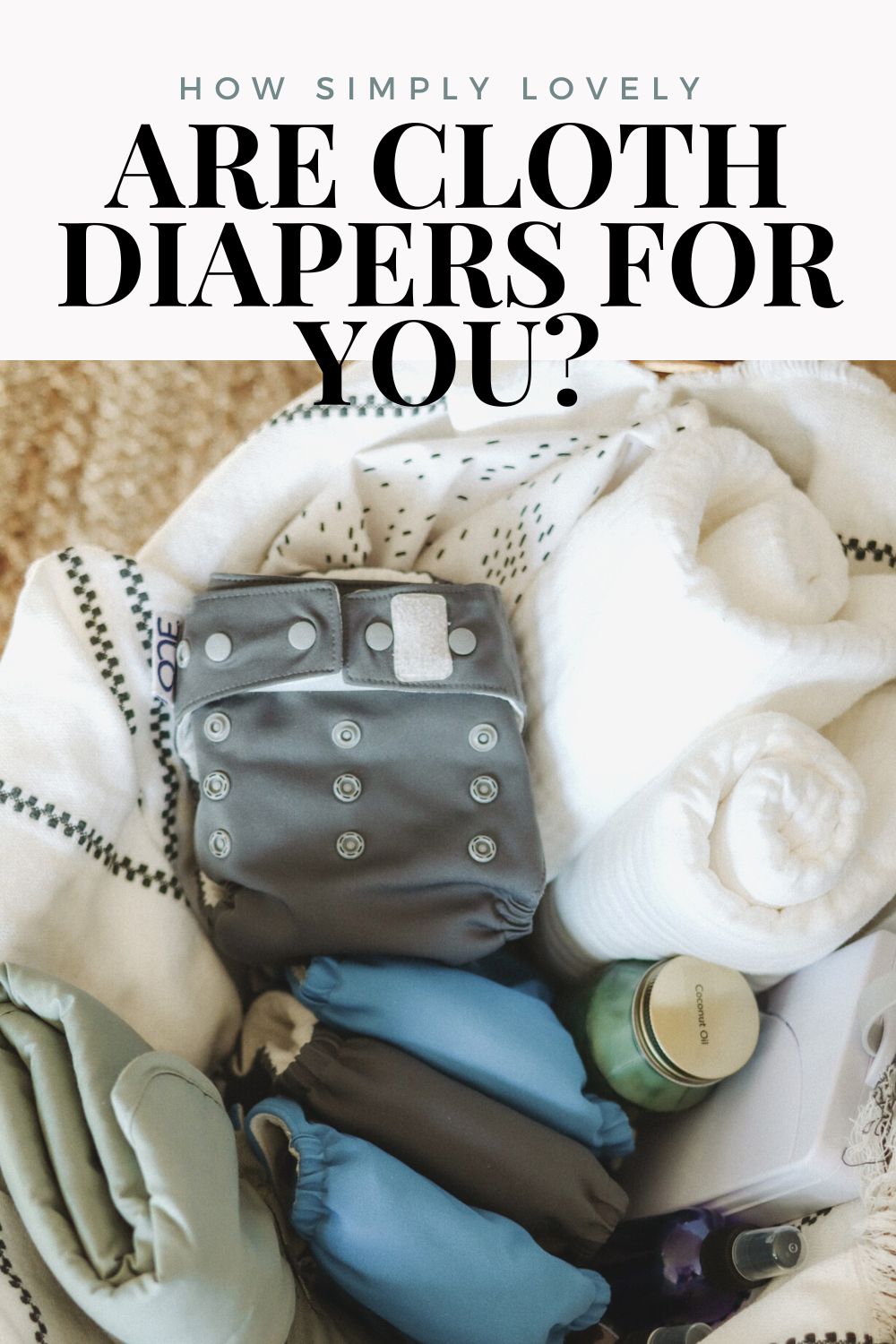
Let’s talk about the unsung heroes of parenting: Cloth diapers. My first encounter with this subject was back in 2015, the kickstart of my mission to live more sustainably.
Cloth diapers are like the superheroes of the diaper world. Wearing a sleek, breathable, waterproof PUL cover, cradling a soft, absorbent cloth layer, a dynamic duo that makes diaper changes a wonderfully sustainable option.
Now, I get it. Cloth diapers often get the side-eye, labeled as ‘gross’ or dismissed as ‘too much work’. Even my sister raised an eyebrow, deeming it ‘too crunchy’ for her taste.
However, the journey into the world of cloth diapers is anything but intimidating! It’s a tale of research, revelation, and realizing the incredible long-term perks of this sustainable choice.
The Benefits of Cloth Diapering
Composition
Enter the world of disposable diapers. The conventional ones often undergo a chlorine-bleaching process, releasing traces of dioxins into the mix. But the chemical ordeal doesn’t end there. Most diaper brands come loaded with the unsettling trio of formaldehyde, PCBs (endocrine disrupters), and PAH (hormone disrupters).
Now, there’s a glimmer of hope with non-toxic disposable diapers – names like Dyper, EcoPea, and HealthyBaby shine through, with the latter proudly boasting an EWG certification. But be prepared to loosen those purse strings for this cleaner, greener option.
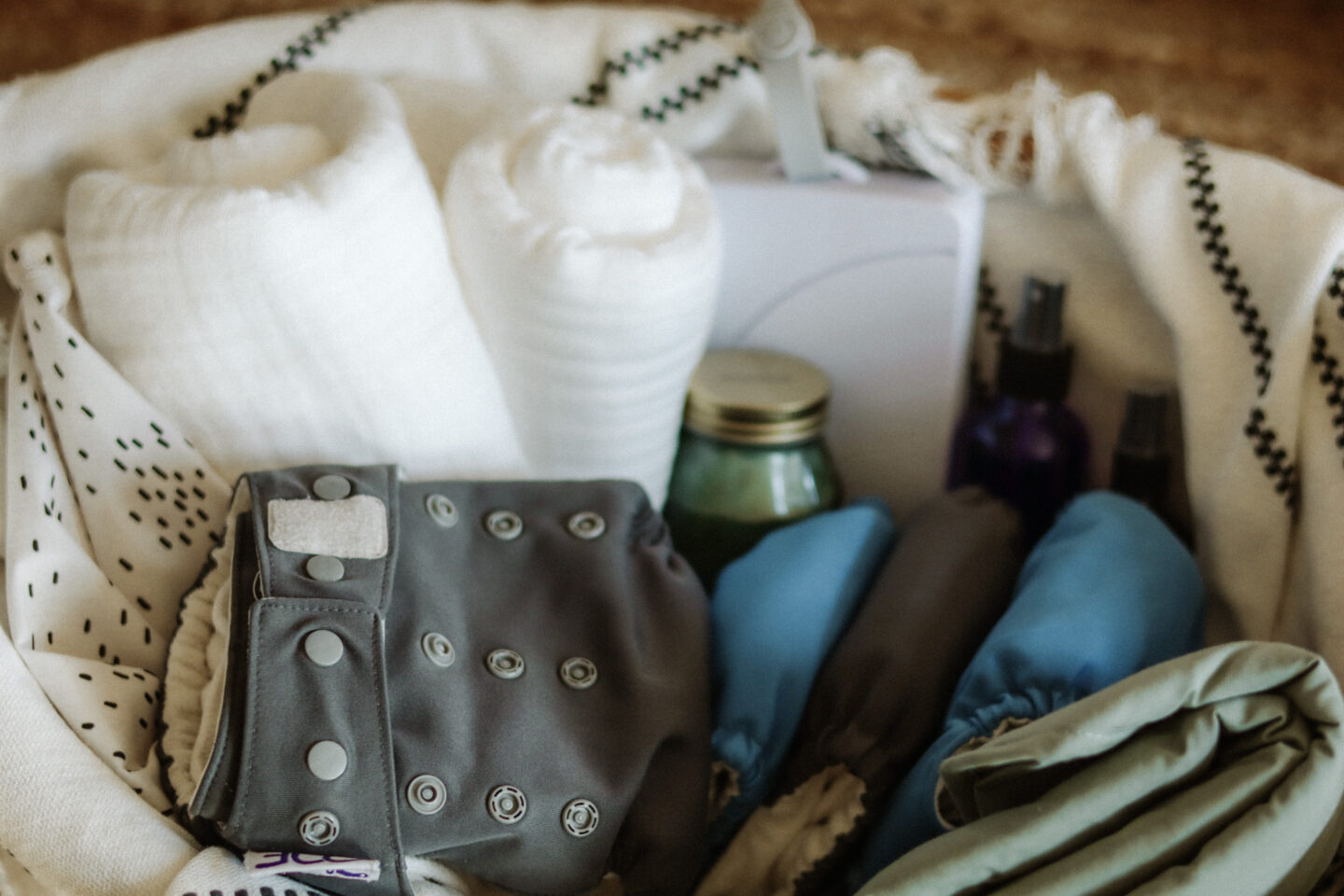
Here is where the universe of cloth diapers unfolds before you, offering a spectrum of choices. Each is a canvas for comfort, sustainability, and a diapering experience that doesn’t compromise your baby’s well-being.
Cost
Contemporary disposable diapers can set you back an average of $1,000 annually! That’s before factoring in the expense of organic or toxin-free options.
With cloth diapers fresh off the shelf, you’re looking at an upfront cost ranging from $300 to $800, depending on the brand. Don’t overlook the second-hand market—it’s a budget-friendly gem.
Here’s the magic: With proper care, your cloth diaper investment isn’t just a one-time deal. It’s a ticket to savings. Pass them down to future siblings, sell them in the resale market, or keep them for your baby’s potty-trained days; the long-term cost advantage swings heavily in favor of cloth diapers.
Unveiling the Playful Variety of Cloth Diapers!
As you delve deeper into the ‘cloth diaper lifestyle,’ you will find the wealth of options can be a bit overwhelming. The question arises: How do you narrow down the choices to find the ideal fit for your family?
Lucky for you, I did the homework, so you don’t have to!
All-In-One (AIO)
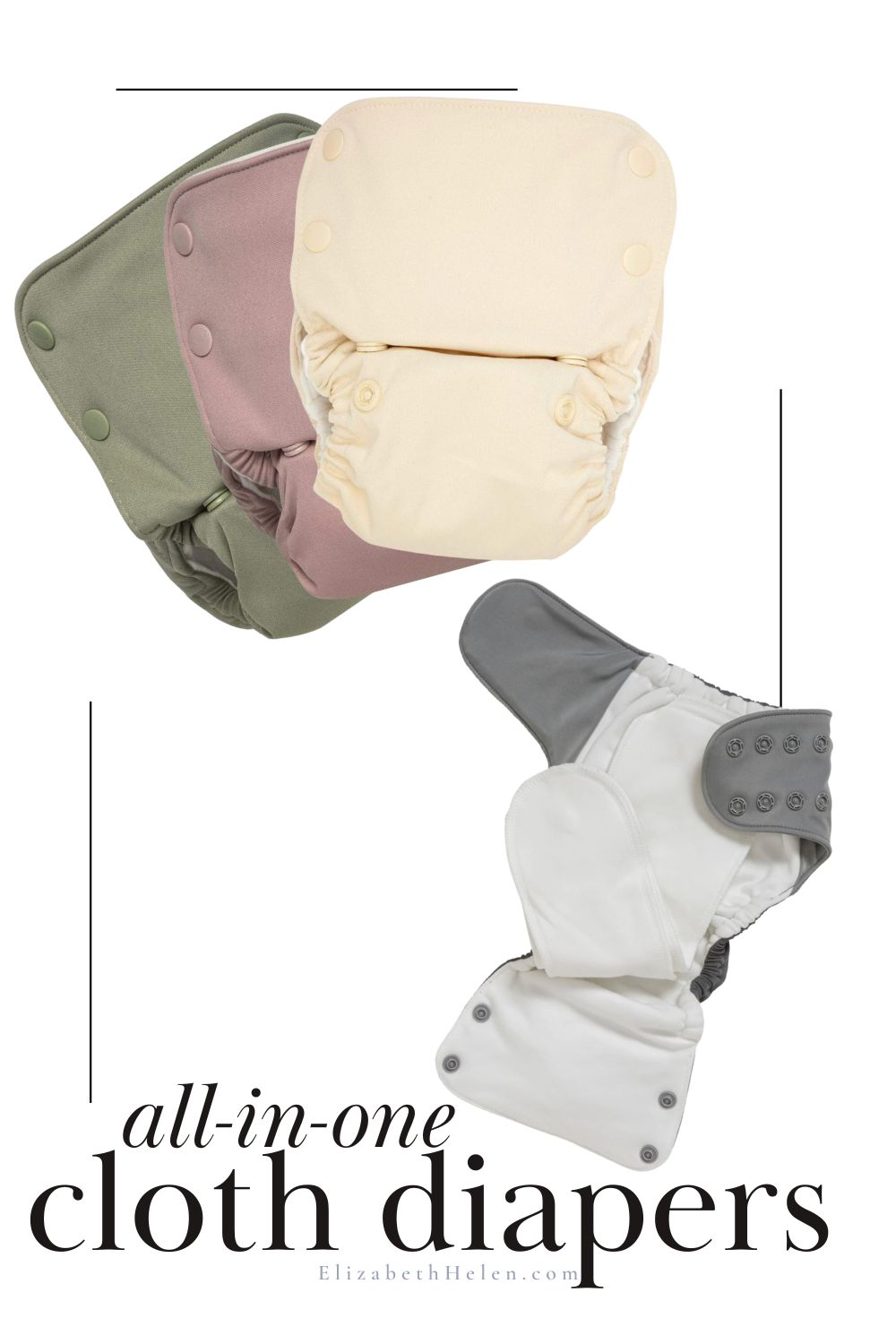
All-in-ones or “AIO” have the inner absorbent cloth attached to the PUL outer shell. This option makes laundering the entire diaper a breeze. Discard the solids in the toilet and run the entire diaper in the wash. Keep in mind that the dry time might be longer in comparison to the other options.
The AIO convenience costs approximately $25 per diaper, and Grovia‘s AIO cloth diapers boast an excellent selection. Their organic collection stands out, featuring organic cotton for the inner layer and the outer layer.
You can grab a beautiful set of AIO from Grovia here (Amazon)!
Hybrid
Hybrid cloth diapers combine the best of both worlds, offering a versatile diapering solution. They typically consist of a reusable outer shell paired with a cloth or disposable insert. If the cover isn’t soiled, you only need to change the insert and continue to use the same cover. With this option, you could purchase fewer covers than cloth inserts. Hybrid diapers provide flexibility, making them an excellent choice for those who appreciate sustainability but also seek the convenience of disposable inserts on occasion.
Highlighting Grovia once more for their exceptional range of hybrid cloth diapers. You can customize the shell by tailoring the absorbency as needed or pair it with a prefold or flat that you may already have in your inventory.
Check out this adorable airplane hybrid from Grovia(Amazon)!
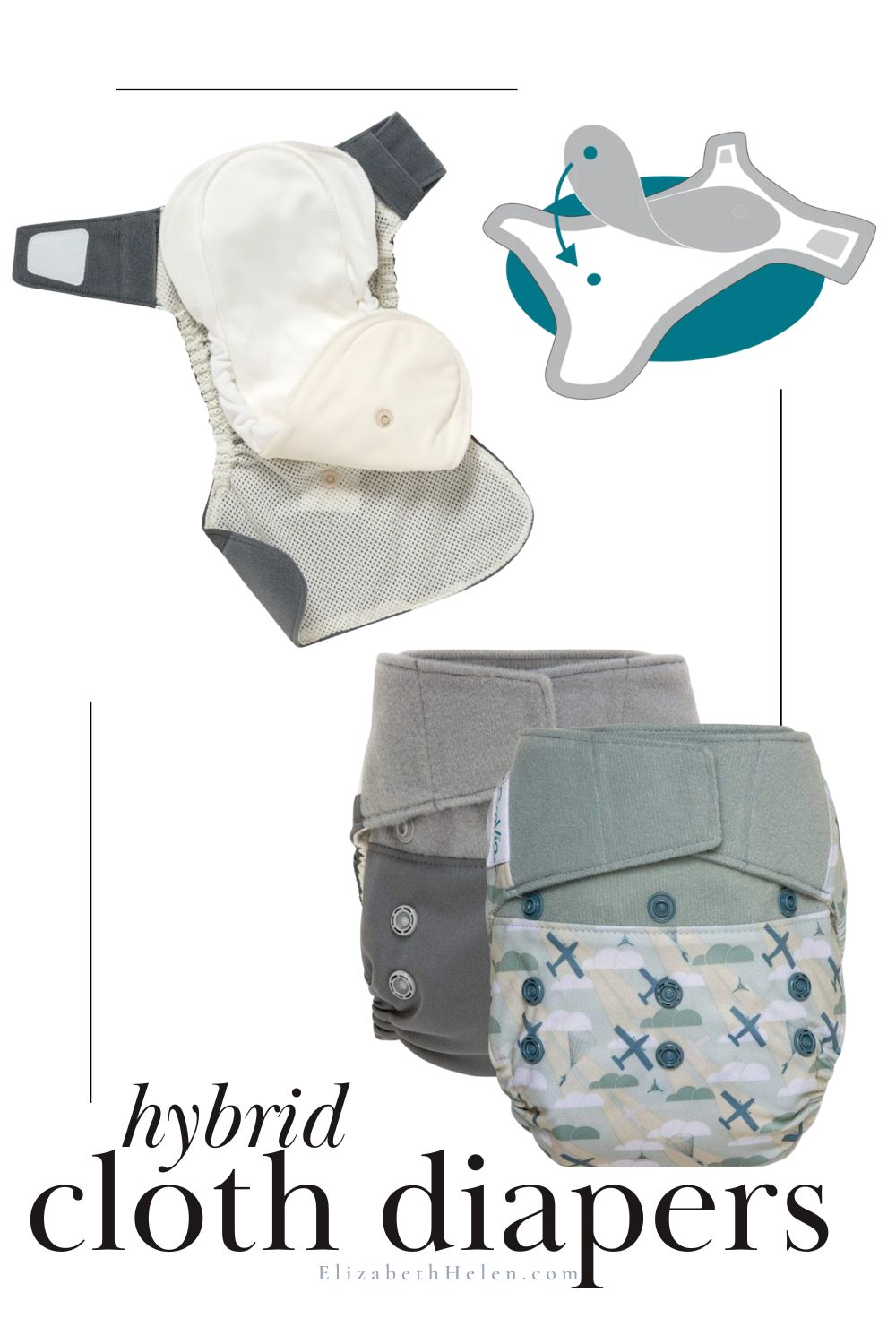
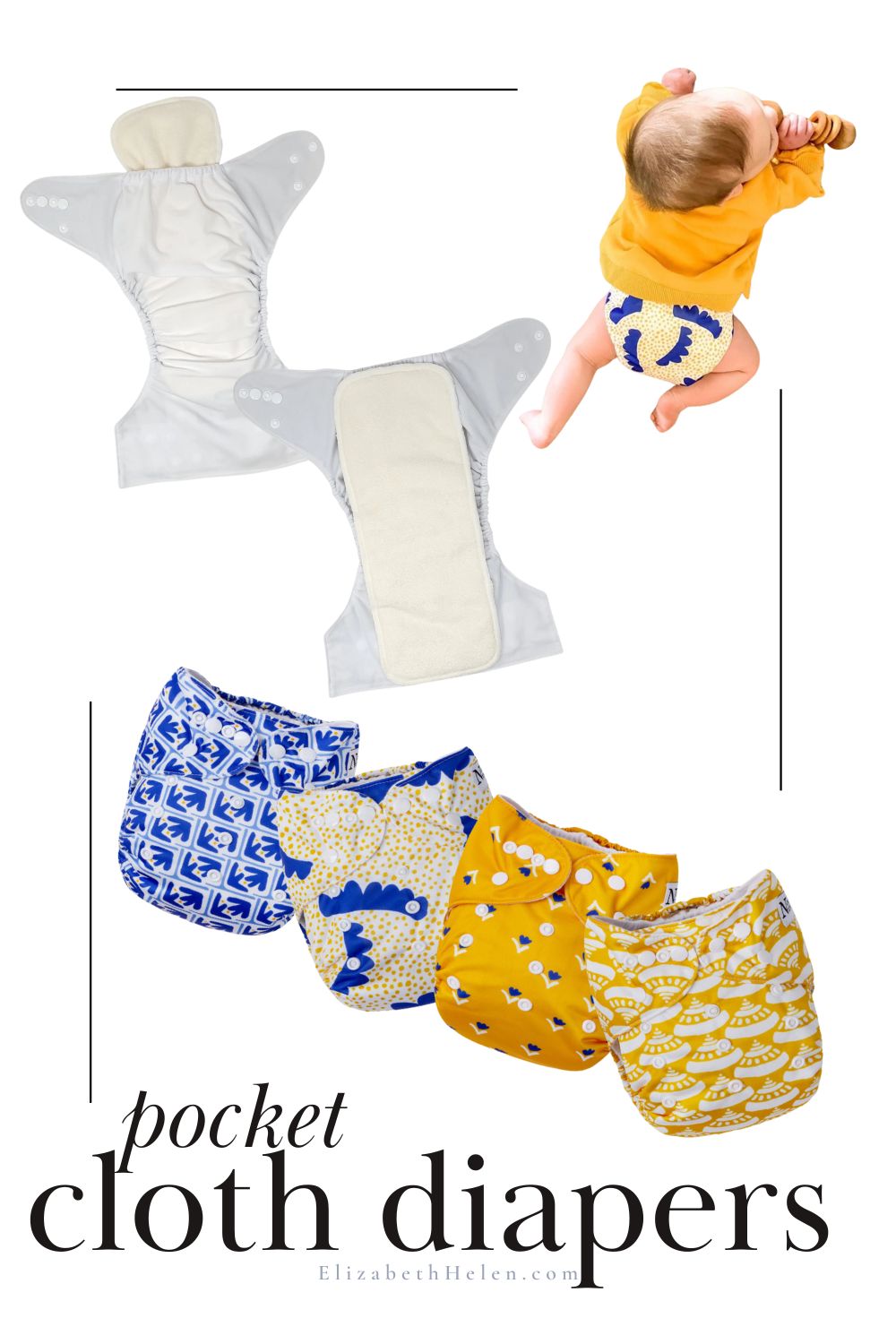
As the name describes, these diapers have pockets inside the cover where you insert the cloth absorbent. With this option, you decide the level of absorbency you would like by adding an extra cloth layer inside the pocket.
This is also considered a single-use diaper, meaning that once soiled, you remove the inserts from the pocket before placing the cloth and covering it in your designated cloth laundry hamper. It will also dry faster than the all-in-one since you removed the cloth from the cover. Costs are comparable to All-in-one diapers. Nora’s Nursery has the most adorable prints if you want to give your baby a little personality.
For a great starter back, check out this bundle from Amazon.
Prefolds
Prefolds and flats transport you back to the classic era of cloth diapering. Envelop your baby with a rectangular, absorbent cloth, securing it snugly with a convenient touch—whether with Snappis or a Safety pin. It’s a nostalgic nod to your grandmother’s method with cloth diapers, bringing tradition and practicality together.
Green Mountain Diapers is your one-stop shop for all things prefold and flat. Their thoughtfully bundled packages are perfect for those new to cloth diapering, offering a helpful starting point for anyone navigating this eco-friendly journey.
Here is an easy add to cart for your prefold collection (Amazon).
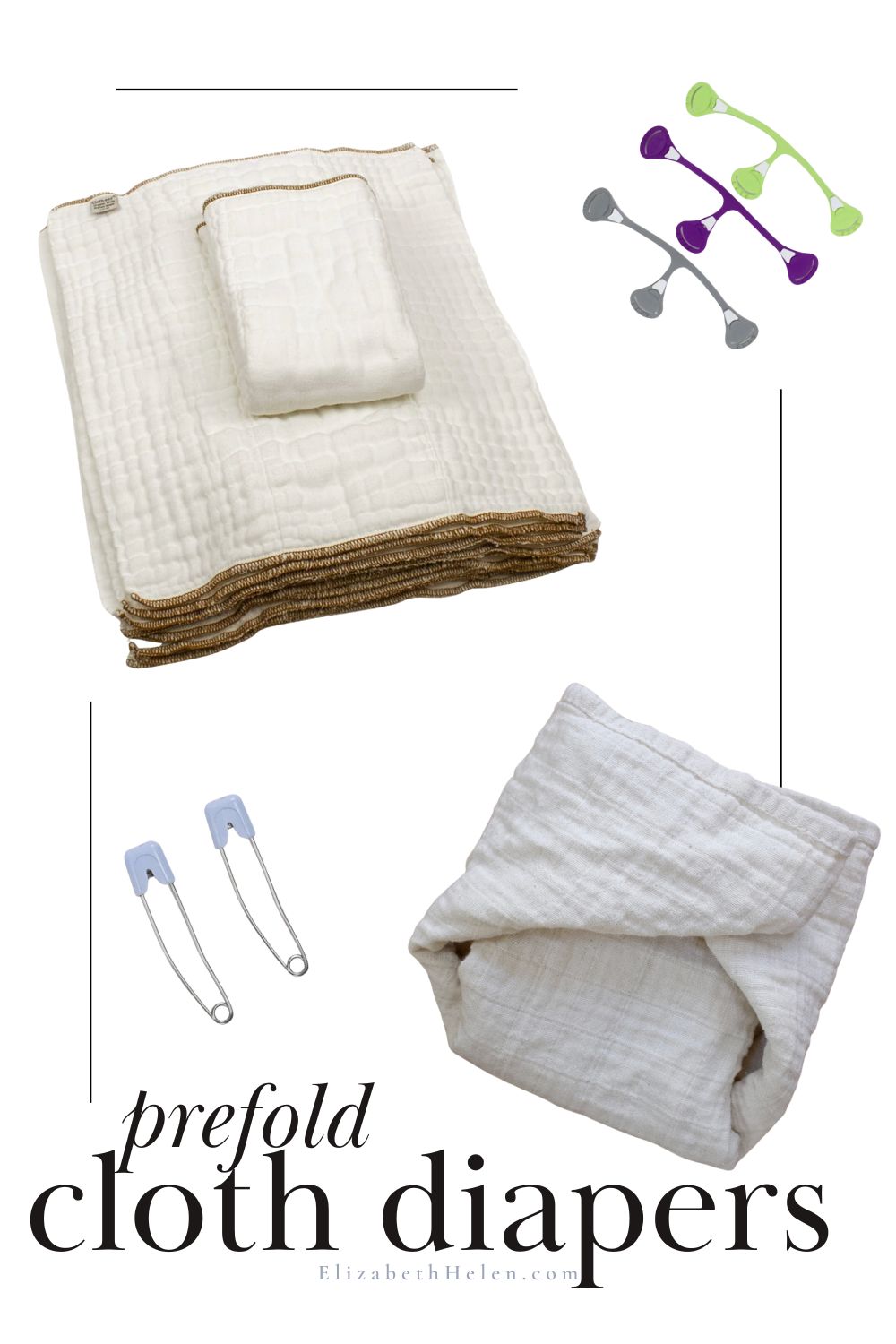
Fitted
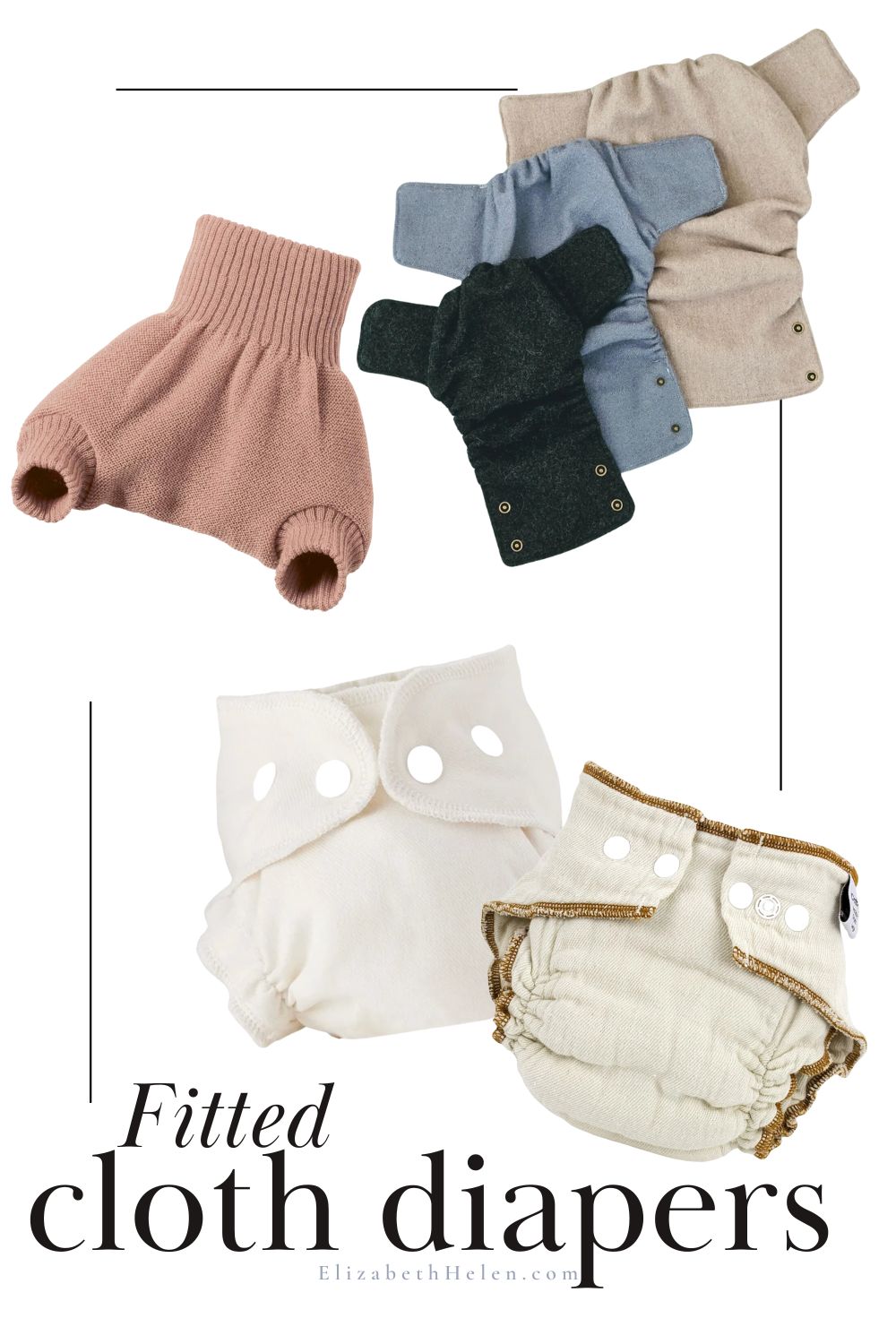
These inners look the most like contemporary diapers that use snaps or Velcro closures around the waist. You could find organic options at Esembly or Green Mountain Diapers. You would need a waterproof cover to go over them. If you use only natural fibers, you could purchase a wool cover or an alpaca cover like the one I have from Lunapaca. Both fibers wick away moisture; the difference is that with wool, you would need to apply lanolin to them.
Here’s a great set for your Esembly Organic Cloth Inner(Amazon).
In parenting choices, cloth diapers shine as sustainability champions, offering comfort and long-term savings. Choosing cloth is a commitment to a healthier, eco-conscious, and cost-effective diapering journey—a mindful lifestyle that balances comfort with reduced environmental impact.
Are you considering the shift to sustainable parenting with cloth diapers? Please feel free to share your experiences or thoughts in the comments below.
Pin this for later.
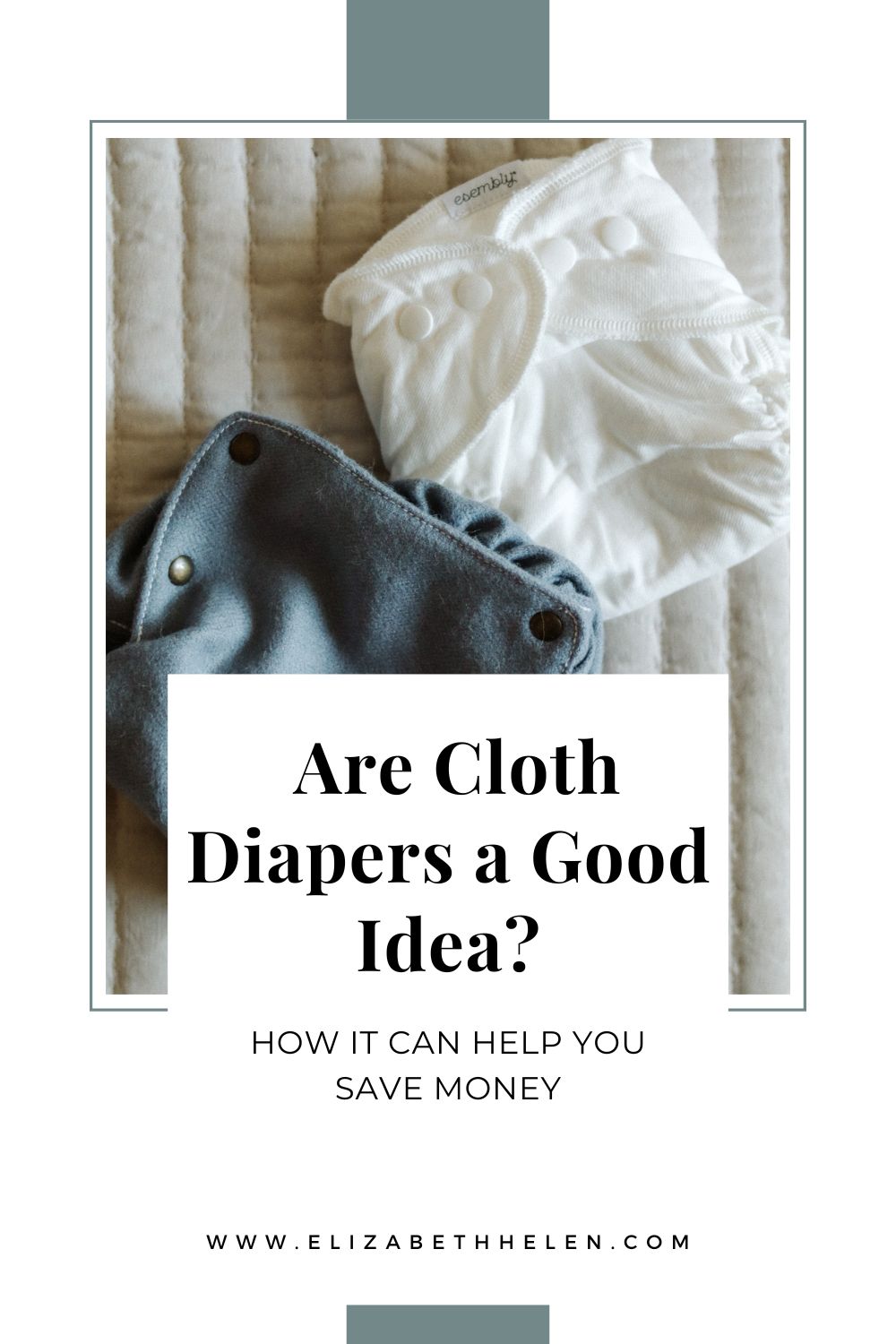

Wow! This really is the most comprehensive guide to cloth diapering that I’ve read online. I also didn’t realize how chic some of these options look. Great article!
Author
Absolutely! It’s an intimidating subject to delve into at first. I’m glad my research on the subject can open the doors for others to see other options.